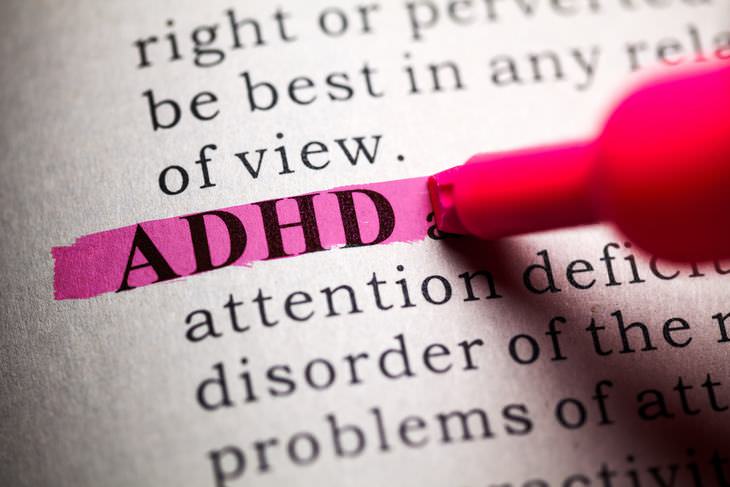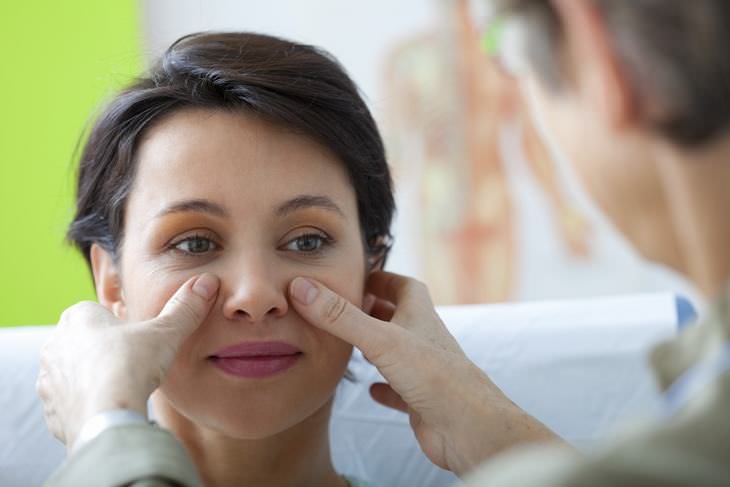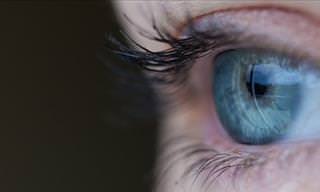1. Low testosterone

After the age of 30, testosterone levels drop with age at about 1% each year. But if they get too low, men can experience weight gain, fatigue, low libido, erectile dysfunction, and mood swings. Many other conditions can be the cause of those symptoms too, so be sure to visit a doctor. William N. Wang, MD, vice president, and chief medical officer at Dignity Health's Glendale Memorial Hospital and Health Center says: “Assuming you are not on medications which can cause [these] side effects, depression, diabetes, and sleep apnea all can either mimic the symptoms or cause a drop in testosterone. Adding testosterone to any of these other primary conditions can make your symptoms worse, not better.” Taking testosterone can also increase your risk of a heart attack and blood clots, so proceed with caution and make sure therapy is truly necessary.
2. Migraines
Chances are your splitting headache is not actually a migraine. Amir H. Barzin, DO, UNC School of Medicine Assistant Professor, Family Medicine says “It is only really seen in about 12 percent of people. A migraine is usually associated with nausea and/or light or sound sensitivity and usually goes through stages.” Stages include irritability, depression, or euphoria up to 48 hours before a migraine, including seeing bright circles or hearing ringing in your ears, the throbbing headache itself and subsequent exhaustion. Nevertheless, it is a good idea to figure out what is causing your headache, especially if they are recurring. Dr. Barzin suggests creating a headache log: “A patient can write down when they have their headaches, what they are doing, the foods they ate, any possible triggers (stress, loud noises, bright lights), how long the headache lasts, any treatments tried and the effectiveness of the treatments.”
3. ADHD

According to studies, ADHD is overdiagnosed in children, and this can be a problem with adults as well. ADHD is often characterized by inattention, hyperactivity, and impulsivity. It impacts work and relationships and a diagnosis requires the presence of multiple symptoms. “Depression is more common in the general population,” says Dr. Wang, “and its signs—such as chronic forgetfulness, difficulty concentrating, lack of motivation, mood swings, low self-esteem, procrastination, substance abuse, and workplace issues—are also seen in adult ADHD.”Before jumping to conclusions he suggests seeing your doctor. Other possibilities for ADHD-like behavior include anxiety, undetected seizures, thyroid problems, drug or alcohol use, and sudden life changes.
4. Chronic fatigue syndrome
Feeling tired all the time? While it may feel like you have a chronic condition, it is unlikely that it's this one. Known as myalgic encephalomyelitis, chronic fatigue syndrome affects between 836,000 to 2.5 million Americans. Aside from experiencing exhaustion for at least six months, you are also likely to have flu-like symptoms, brain fog and unexplained muscle or joint pain. And you are likely to feel worse after mildly exerting yourself. So, what could your seemingly constant fatigue be attributed to? If your lifestyle doesn't seem to be a likely answer - e.g. too little sleep, too much stress or obesity - it may be a wide range of medical conditions, including a sleep disorder, a heart or lung problem, anemia, mononucleosis, lupus, or a mental health issue.
5. Yeast infection
You may be surprised to learn that vaginal itchiness and abnormal discharge don't necessarily mean that you have a yeast infection. In fact, according to a study, out of 150 patients who thought they had a yeast infection, only 26% actually did. An incorrect self-diagnosis can lead you to take an over-the-counter medication that you don't need and a problem that won't go away. So, if you have the above symptoms, along with burning, redness, and swelling, you may have bacterial vaginosis, inflammation, dry skin, an allergy, or an STD like chlamydia or gonorrhea. Be sure to see a doctor.
6. Rheumatoid arthritis
Are you one of the 1.5 million Americans who have rheumatoid arthritis? RA occurs when your immune system mistakenly attacks healthy cells in your joints, causing swelling and pain. However, the more likely culprit for your joint pain is osteoarthritis, which affects 27 million people in the U.S. each year. But, how can you distinguish the two? “Rheumatoid arthritis tends to involve the smaller joints of the body and [present] symmetrically, left and right,” says Dr. Wang, he adds that multiple joints tend to be affected at the same time. “Osteoarthritis, which is wear and tear, tends to hit the joint with more use first.” Be diagnosed accurately is essential because the primary method of treatment for RA involved medications. Lupus, gout and psoriatic arthritis are other conditions that can be mistaken for RA.
7. Bipolar disorder

Bipolar disorders are usually characterized by extreme mood and energy fluctuations, but it is often diagnosed because there is medication to treat it. In fact, according to a study in the Journal of Clinical Psychiatry, less than half of the people diagnosed with bipolar disorder should have been. The problem here is that medications used to treat it can increase the risk of developing high cholesterol and diabetes, among other health issues. Other conditions that exhibit bipolar-like symptoms include depression, anxiety, ADHD, borderline personality disorder, metabolic or brain disorders, and substance abuse.
8. Chronic sinusitis
If an ER doctor or a primary care physician diagnosis you with chronic sinusitis, you will want to get a second opinion from an ENT. According to a study conducted by researchers at the University of Michigan, more than 99% of patients diagnosed with this condition by someone who wasn't an ENT didn't actually have it. Chronic sinusitis tends to last for more than three months and usually requires an endoscopy or CT scan to diagnose. It also calls for different treatment, including a longer course of antibiotics and oral steroids. It may not even be sinusitis at all. It could be a viral infection, an allergy, or even a migraine or tension headache.
9. Acute bacterial sinusitis

Acute sinusitis affects 1 in 8 adults per year. But, there's a good chance you don't have the type that requires antibiotics. Dana Neutze, MD, Ph.D., UNC School of Medicine Assistant Professor, Family Medicine says, “The vast majority of sinusitis, which is inflammation of the sinuses thus resulting in nasal discharge, face paint, and pressure, is viral in nature. We suspect it is bacterial only if symptoms have persisted for at least 10 days. Taking antibiotics for viral sinusitis does nothing for the condition, but can cause diarrhea, a secondary infection [caused by a bacteria] called Clostridium difficile, or leads to resistance of bacteria to antibiotics in the future.”
10. Chronic kidney disease
Chronic kidney disease may not cause any symptoms early on, though you might get tested for it should you have diabetes, high blood pressure, heart disease or a family history of kidney issues. You may experience swelling in your legs, feet, and face, along with dry skin, increased or decreased urine production, nausea, and trouble concentrating. CKD may be over-diagnosed due to new guidelines that were designed for early intervention. According to BMJ, many people's condition never progresses to full-fledged, symptomatic kidney disease. This means that they should never have had that early diagnosis to start. Though not going into kidney failure is a good thing, the diagnosis itself may lead to unnecessary stress, tests, and treatments.
 Go to BabaMail
Go to BabaMail




























